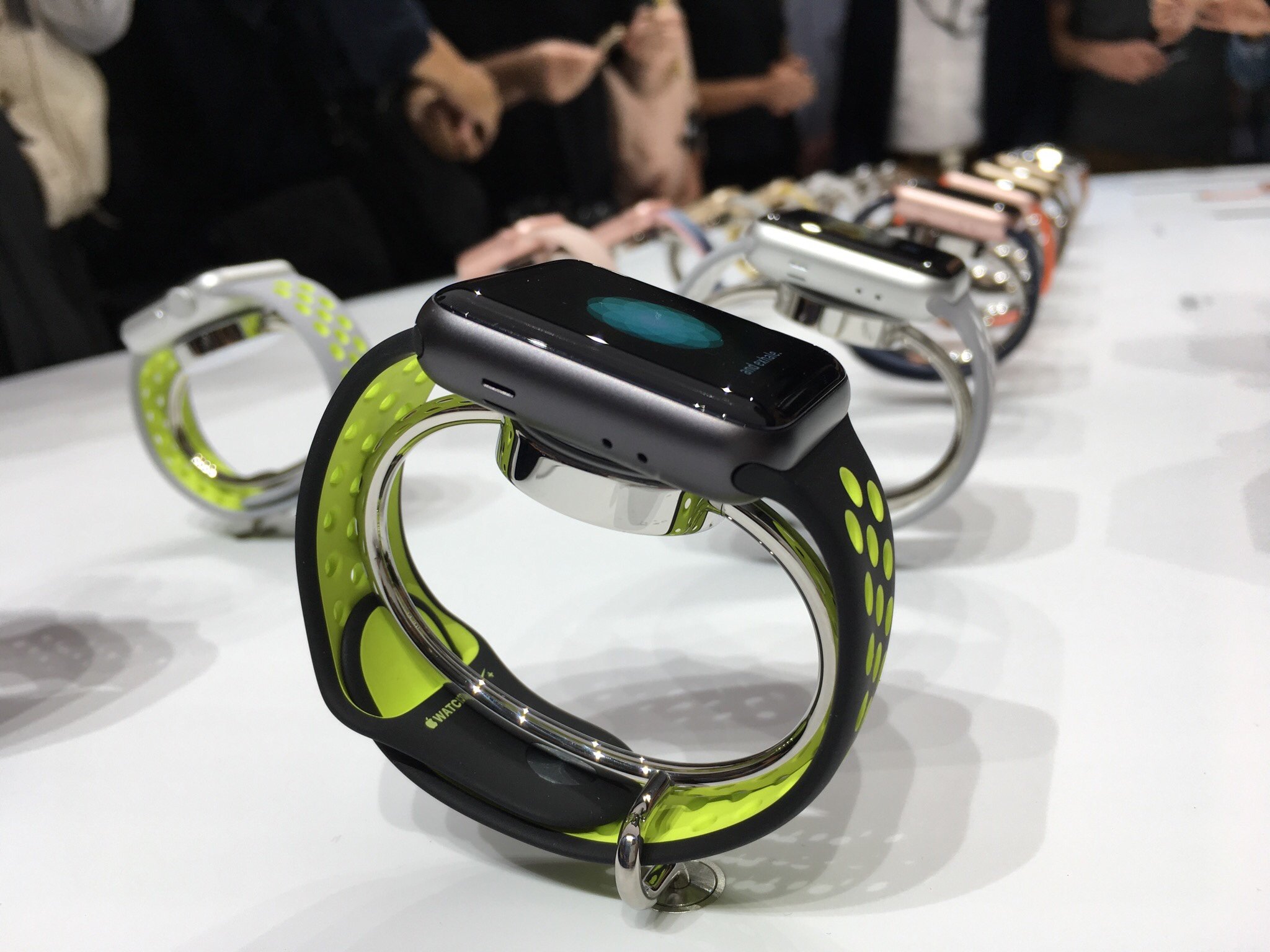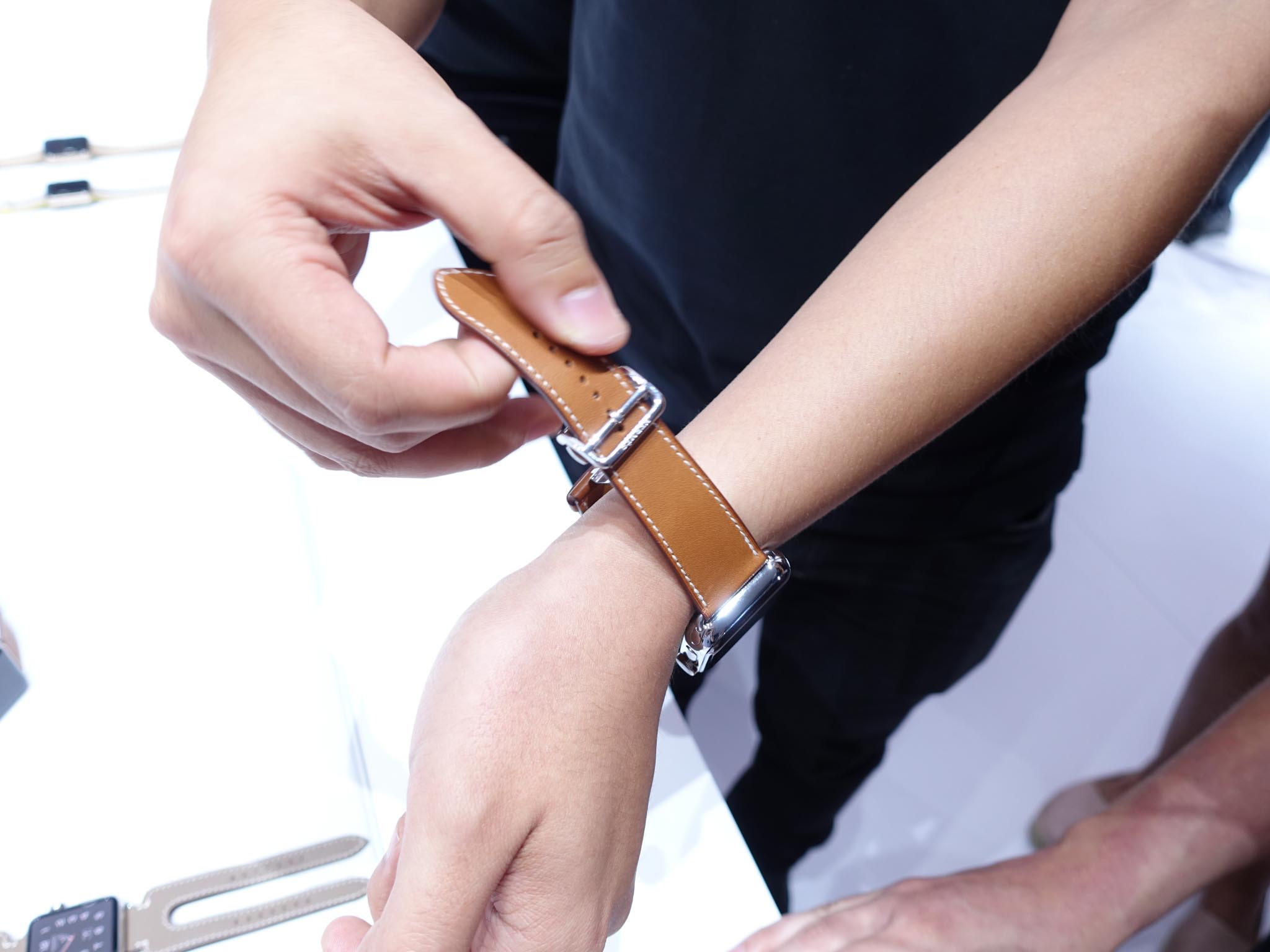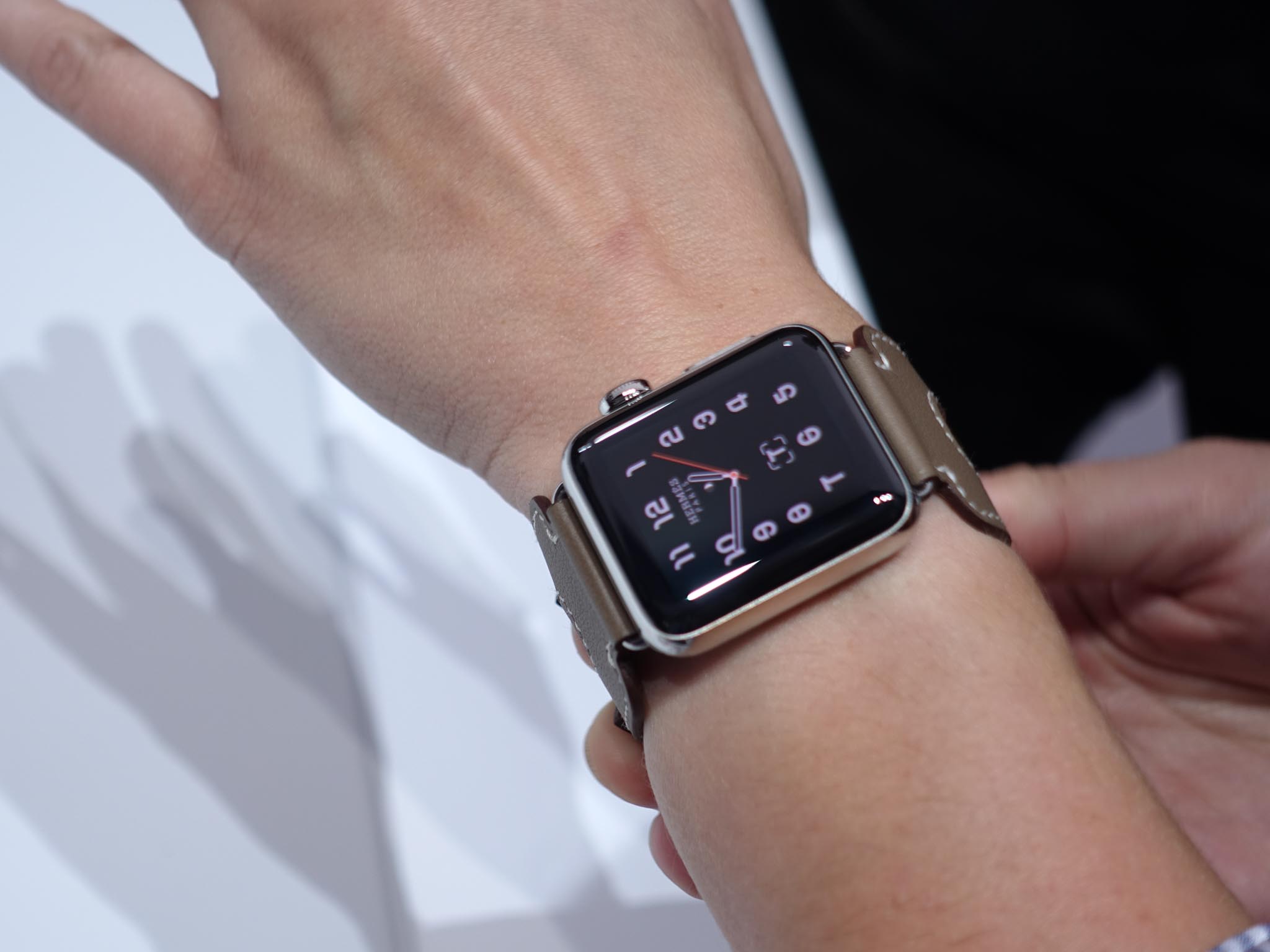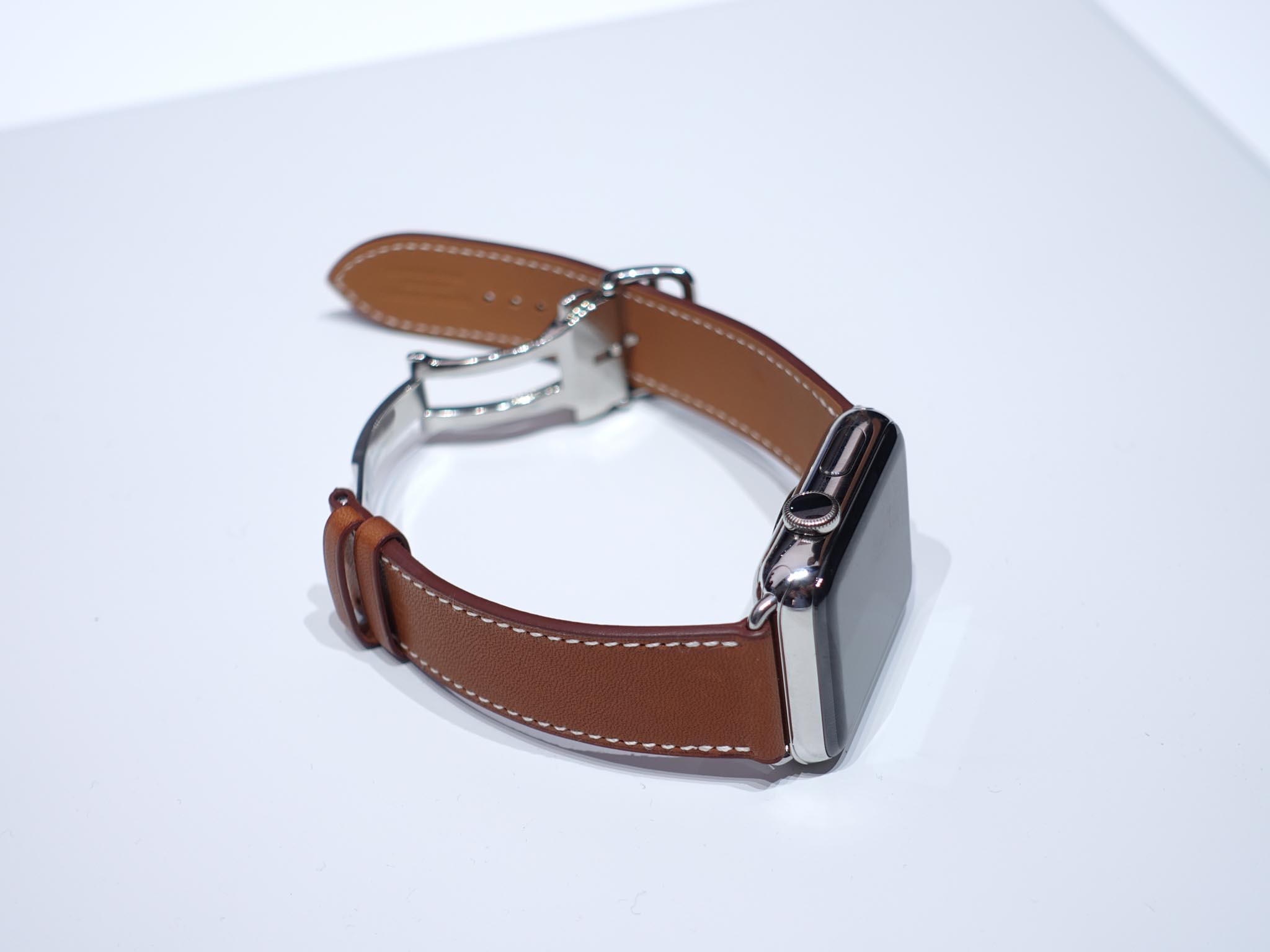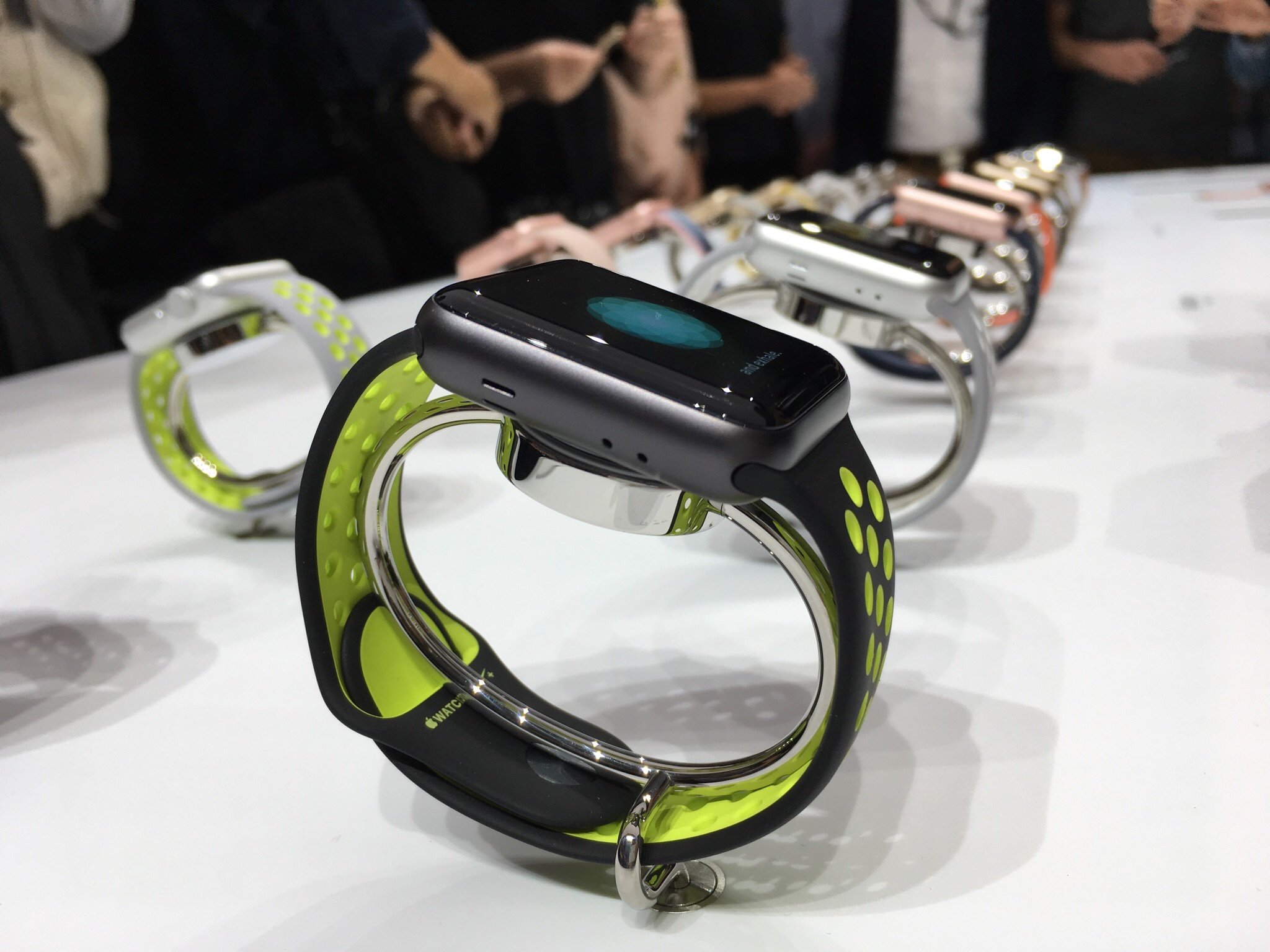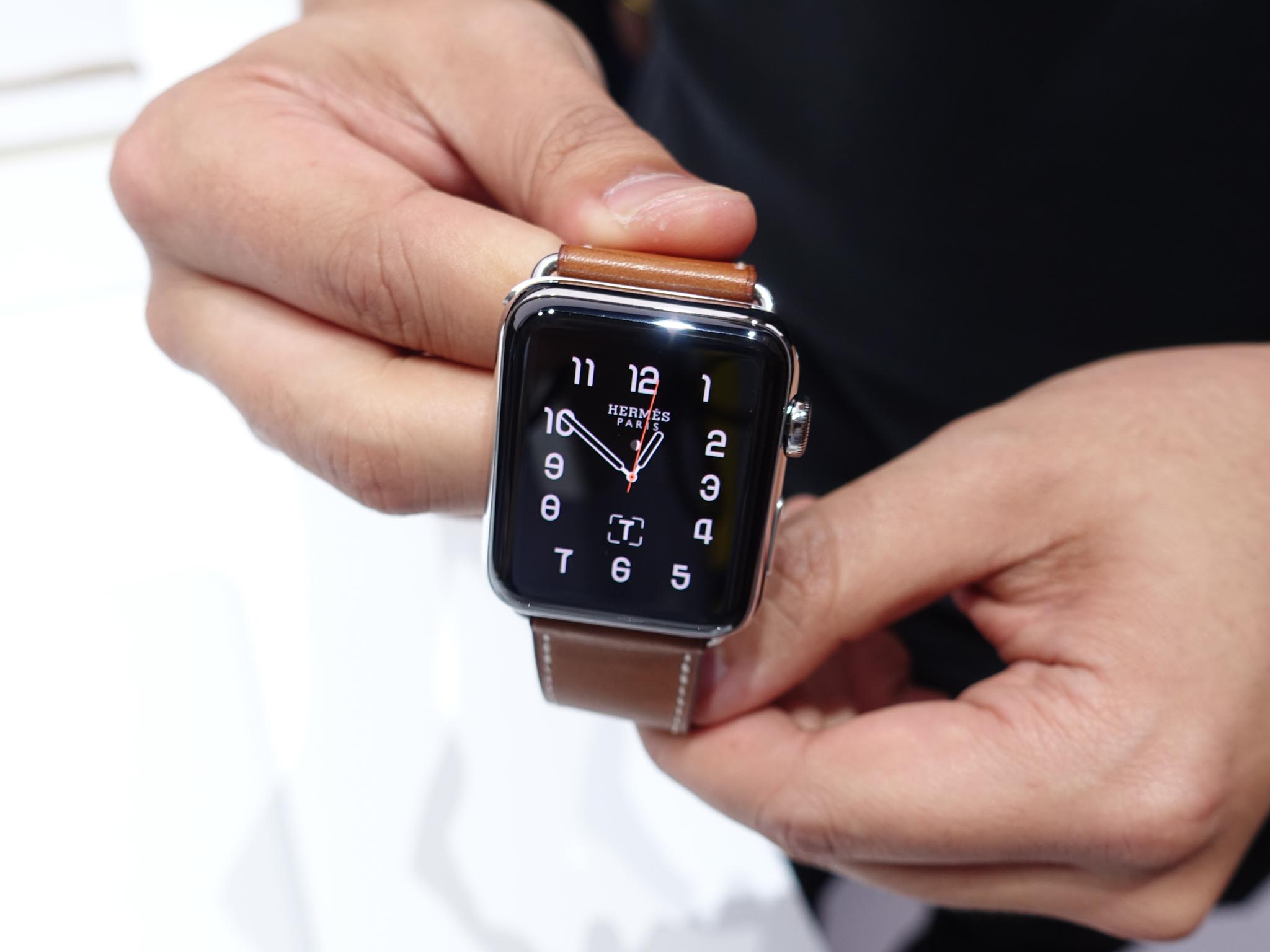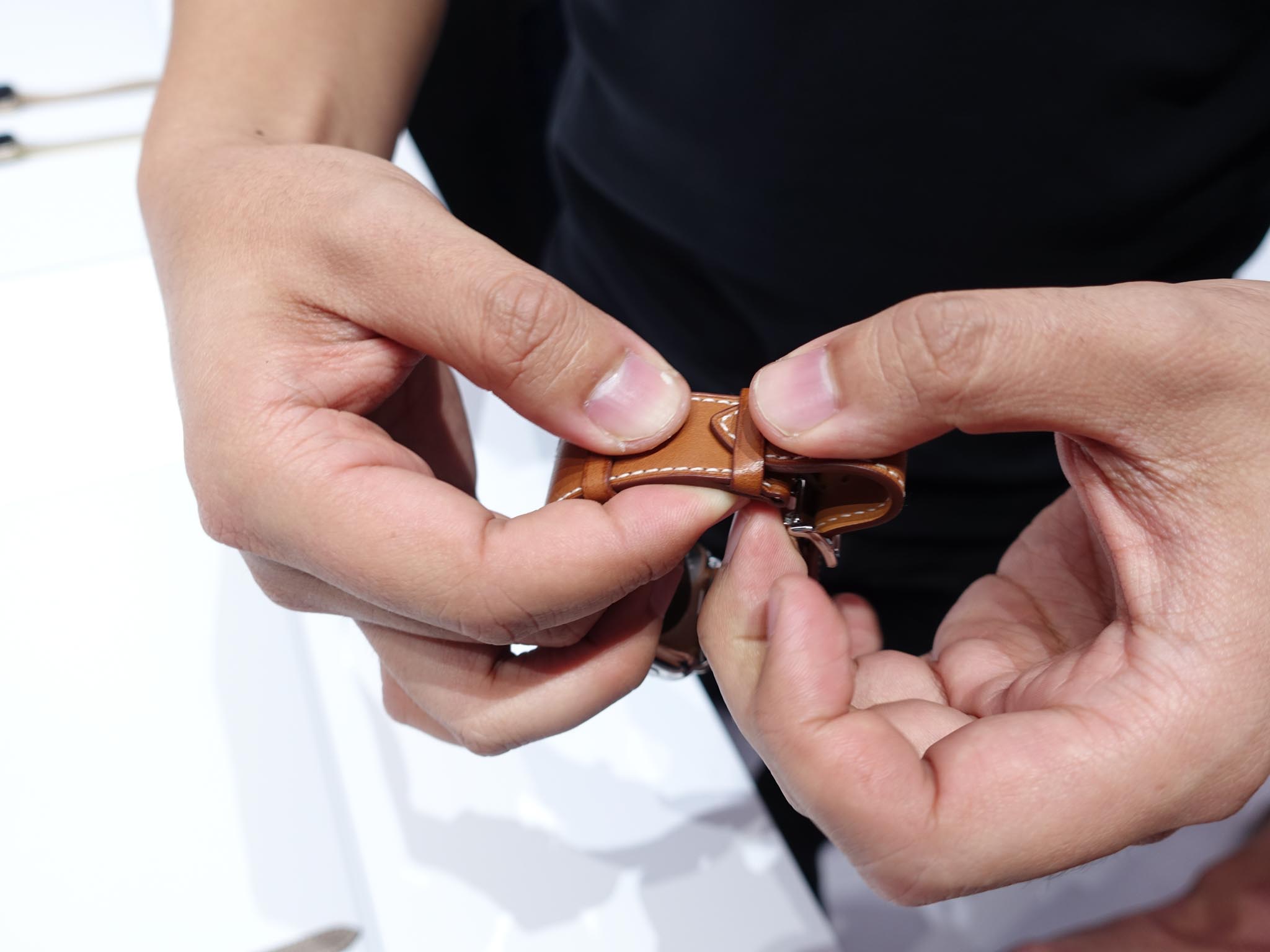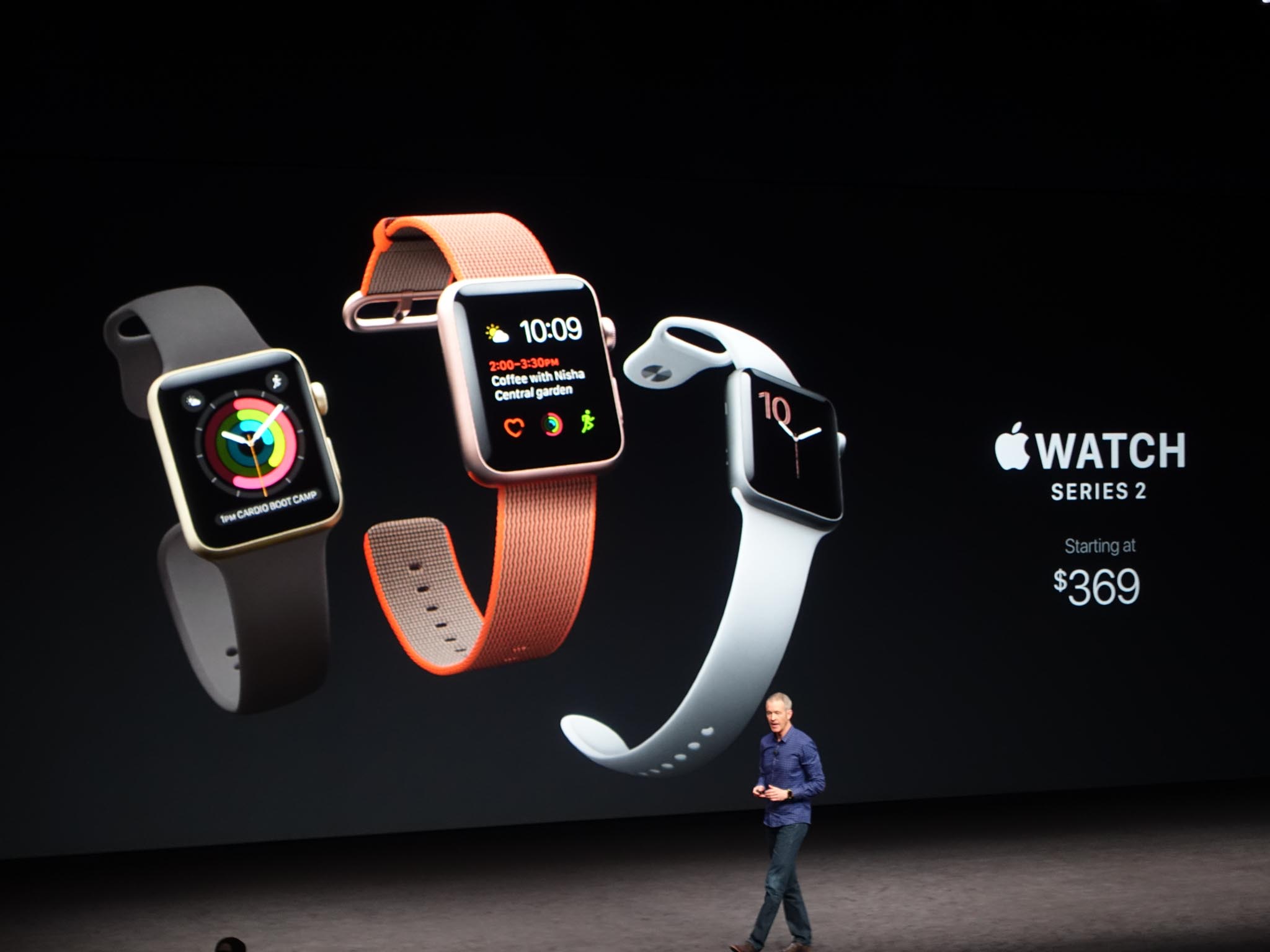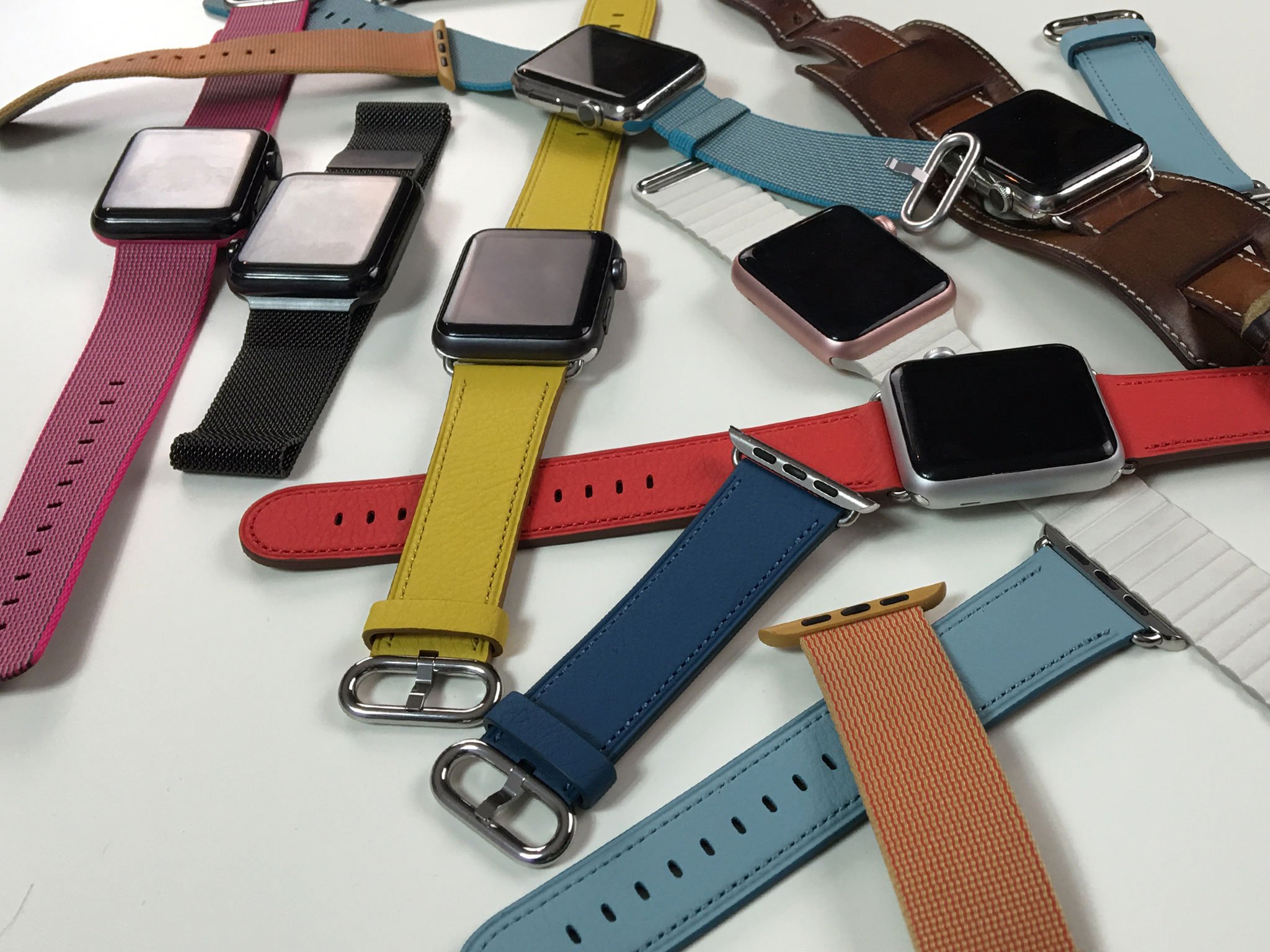Which Apple Watch should you buy: Series 1 or Series 2?
- sep
- 08
- Posted by Michael
- Posted in Okategoriserade
Not sure which version of Apple Watch to order? Here are the pros and cons.
There are a lot of choices that go into picking an Apple Watch, including size, casing, color, and bands. With the newest Apple Watch, Apple has added another choice to the mix: features. Now, when you go to order your wearable, you'll have to decide whether you want to get an Apple Watch from Series 1 or Series 2.
What's the difference? Which is best for you and your needs? Read on.
What's the difference between Series 1 and Series 2?
When the Apple Watch was released in April 2015, it offered different casings, but only one set of internal features — call it "Series 0". In September 2016, Apple announced two new feature variations, called Series 1 and Series 2, respectively.
Series 1 is nigh-identical in pretty much every way to Series 0, but it gets the same dual-core processor present in Series 2.
In contrast, Series 2 gets a bevy of new features: Water resistance for swimming, a speaker that spits out water after said swimming workouts, GPS and run tracking, upgraded ceramic backs for all models, and a brighter 1000-nit Retina display. Series 2 watches are also a bit thicker and heavier than their predecessors.
Models and styles
Series 1 and Series 2 are primarily differentiated by internal features, but they also have markedly different exterior Watch models.
Series 1 is essentially Apple's entry-level Watch option for new users: It's limited to Silver, Space Gray, Gold, or Rose Gold Sport aluminum casings, and pricing ranges from just $269-$299.
Series 2, in contrast, offers all of Apple's current case options: Like Series 1, you can buy a watch in any of the aluminum Sport casings, but with greater variation in paired bands. In addition, however, you can also get a Steel Apple Watch, Ceramic Apple Watch Edition, Nike+ Apple Watch, or Hermes Watch with Series 2 internals.
Also keep in mind that the Hermes and Nike+ models are somewhat time-delayed: Hermes options will be available for pre-order on September 9, but won't ship until late September; the Nike+ models won't go on sale until late October.
If you're looking for a budget Apple Watch buy and don't care much about casing style, the Apple Watch Series 1 may be the wearable for you. If you're instead interested in the Nike+, Ceramic, Steel, or Hermes options, you'll want to consider Series 2.
Speed, speed, speed
When it comes to the speed of your watch, you'll be equally served by either Series 1 or Series 2.
Technically, the two watches have slightly different system-on-a-chip options powering them: Series 1 sports an S1P, while Series 2 has the S2. But as we understand it, this primarily refers to the other bits on that chip, including Series 2's integrated GPS antenna, rather than any real change in speed. In that regard, both the S1P and S2 feature the same dual-core processor.
If you want your watch to be snappy and responsive, you'll be happily served by either Series 1 or Series 2.
Run away (from bad battery life)
As mentioned previously, all of the Series 2 models come with integrated GPS: You'll now be able to track your walks and runs in the Activity app (and in third-party programs) without having to bring an iPhone along for the ride.
Unfortunately, because GPS chats with satellites and local cell towers to get your location, it can prove to be a bit of a drain on your battery life. On Apple's battery testing website, the company acknowledged that using GPS features like run-tracking without your iPhone nearby will nix up to three hours from your workout time (up to 8 hours with iPhone present, up to 5 hours without iPhone).
That said, GPS isn't an always-on feature — it's specifically integrated into features like running workouts and turn-by-turn directions. If you don't use these kinds of features, you won't put strain on your battery. And if you're a distance runner, you can greatly improve your battery life by using an external strap to measure your heart rate, taking the stress off the Apple Watch itself.
If you want GPS for run and walk-tracking, Series 2 is the series for you. If you're worried about draining your battery, or don't plan on using GPS, you should be happy with Series 1.
In the water
Are you the next Katie Ledecky or Michael Phelps? If so, the Series 2 models should surprise and delight: They've been made "swim-proof," with water resistance ratings up to 50m/150 feet. In addition, the one hole in the Apple Watch's casing — the speaker/microphone combo — has a new "direct fire" feature that allows you to vibrate the water out of the casing after a swim or heavy water exposure.
Series 1 remains "splash-proof," with an IP7 water rating that allows for 30 minutes of water submersion, up to 1m/3 feet. We've never had problems taking the Apple Watch in the pool, shower, or even on short swims, but that kind of regular exposure can slowly break down its internal seals and lead to wear and tear.
If you plan to swim regularly with the Apple Watch and you want to track your swimming workouts, you'll want the Series 2. If it's just brief water exposure for you, the Series 1 will do you just fine.
Big and bright
Series 1 has the same high-quality OLED Retina display present in the first-generation "Series 0" Apple Watch, rated at 450 nits. (A nit, as so helpfully explained by Apple, is the measurement of light equivalent to the light of one candle. Here's some more information about the craziness of measuring nits, from Gizmodo.)
Series 2 blasts that old display with twice the luminance, however, offering a whopping 1000-nit display — the brightest Apple has ever created. Why so bright? Largely, this is to make glancing at your watch in broad daylight an easier experience.
I've personally never had problems with the Apple Watch in sunlight at its darkest setting, but if your eyes demand a bright, crisp screen, you can't go wrong with the Series 2 models. If you don't mind a slightly darker screen, Series 1's OLED experience should still serve you well.
Weight and materials
There is a slight weight and size difference between Series 1 and Series 2: Series 1 has an identical casing to the first-generation Apple Watch Sport, with a 10.5mm depth and 25g or 30g weights, depending on which model you chose (38mm or 42mm).
In contrast, the Series 2 version of the Sport is .9mm thicker on the wrist — likely due to the waterproofing redesign — and sports an 11.4mm depth. It's also a few grams heavier, with the 38mm version weighing 28.2g, and the 42mm at 34.2g.
In our hands on with both models (as well as the original Series 0 version of the Sport), we didn't see a noticeable weight or bulk difference, but that's not to say it'll be invisible for every Watch user. And those weights increase as you look at Steel or Ceramic options, which go up to 52.4g and 46.5g, respectively.
There's one other thing to consider: The durability of the back casing. Series 1 Sport models come with the same composite back found on the original Apple Watch; in contrast, the Series 2 Sport offers a ceramic back from the start — an option previously limited to the higher-end Steel and Edition models. (Also something to keep in mind: If you're planning on doing a lot of high-impact activity, both the Series 2 Steel and Ceramic versions come with sapphire screens over the Series 1 and 2 Sport's Ion-X glass.)
If thinness and lightness is your absolute top priority, Series 1 has the edge on the slightly bulkier and weightier Series 2. If you're worried about scratches on your back casing from dust or the magnetic charger interfering with your heart rate monitor, however, Series 2's ceramic back may provide more peace of mind.
Pricing
If you're on a budget, the Series 1 Apple Watch is the natural pick here: It starts at just $269, the lowest Apple Watch entry point ever, and the 42mm Watch will cost you just $30 more at $299.
Series 2, in contrast, starts $100 higher, with the 38mm Sport at $369, and goes into the mid-$1000s with the Edition and Hermes models.
If you're not on an extreme budget but still want to be price-conscious, the decision centers around how much use you'll get out of the extra $100 of features that the Series 2 Sport provides: Do you need GPS, swim resistance, and a ceramic back? If not, you can easily grab a Series 1 watch and enjoy the same internal performance improvements.
Who should get the Apple Watch Series 1?
The Series 1 models are great for new Apple Watch users — especially those on a budget. The Sport casing, Ion-X screen, and composite back is durable for most uses, and the dual-core processor allows you to get the most out of watchOS 3 and third-party apps. The Series 1 is also a tad bit thinner and lighter than its Series 2 counterparts.
Who should get the Apple Watch Series 2?
The Series 2 models are the latest and greatest in Apple Watch, and it shows: You can choose between Sport, Steel, or Ceramic casings — and even from special Nike or Hermes partnerships — to fit your personal style. The display is brighter than ever for outdoor activities, and the dual-core processor helps keep your apps speedy and your battery from running out.
For swimmers, runners, and walkers, the swim resistance and GPS features in Series 2 models are huge selling points — and may make this version of the Apple Watch the best smartwatch/fitness tracker hybrid on the market.
Which Apple Watch are you getting?
Planning to order a Series 1 or Series 2 Apple Watch? Have any other questions? Let us know in the comments.
Senaste inläggen
- Report suggests touchscreen Macs are coming, and iPadOS 18 could add new features for keyboard users
- Apple insider reveals full iPad slate for after the ”Let Loose” event on Tuesday – and there’s a big surprise
- iOS 18 might add AI-powered Messages summary feature for your friends who text too much
- Apple boss says it has ”advantages that will differentiate” its AI push
- Apple celebrates May 4th with fun new Star Wars ad for ’Find Your Friends’
Senaste kommentarer
Arkiv
- maj 2024
- april 2024
- mars 2024
- februari 2024
- januari 2024
- december 2023
- november 2023
- oktober 2023
- september 2023
- augusti 2023
- juli 2023
- juni 2023
- maj 2023
- april 2023
- mars 2023
- februari 2023
- januari 2023
- december 2022
- november 2022
- oktober 2022
- september 2022
- augusti 2022
- juli 2022
- juni 2022
- maj 2022
- april 2022
- mars 2022
- februari 2022
- april 2021
- mars 2021
- januari 2021
- december 2020
- november 2020
- oktober 2020
- september 2020
- augusti 2020
- juli 2020
- juni 2020
- maj 2020
- april 2020
- mars 2020
- februari 2020
- januari 2020
- december 2019
- november 2019
- oktober 2019
- september 2019
- augusti 2019
- juli 2019
- juni 2019
- maj 2019
- april 2019
- mars 2019
- februari 2019
- januari 2019
- december 2018
- november 2018
- oktober 2018
- september 2018
- augusti 2018
- juli 2018
- juni 2018
- maj 2018
- april 2018
- mars 2018
- februari 2018
- januari 2018
- december 2017
- november 2017
- oktober 2017
- september 2017
- augusti 2017
- juli 2017
- juni 2017
- maj 2017
- april 2017
- mars 2017
- februari 2017
- januari 2017
- december 2016
- november 2016
- oktober 2016
- september 2016
- augusti 2016
- juli 2016
- juni 2016
- maj 2016
- april 2016
- mars 2016
- februari 2016
- januari 2016
- december 2015
- november 2015
- oktober 2015
- september 2015
- augusti 2015
- juli 2015
- juni 2015
- maj 2015
- april 2015
- mars 2015
- februari 2015
- januari 2015
- december 2014
- november 2014
- oktober 2014
- september 2014
- augusti 2014
- juli 2014
- juni 2014
- maj 2014
- april 2014
- mars 2014
- februari 2014
- januari 2014
Kategorier
- –> Publicera på PFA löp
- (PRODUCT) RED
- 2015
- 25PP
- 2nd gen
- 32gb
- 3D Touch
- 3D-kamera
- 4k
- 64gb
- 9to5mac
- A10
- A9X
- Aaron Sorkin
- Accessories
- adapter
- AirPlay
- AirPods
- Aktiv
- Aktivitetsarmband
- Aktuellt
- Alfred
- AMOLED
- Android Wear
- Angela Ahrendts
- Ångerätt
- announcements
- Ansiktsigenkänning
- app
- App Store
- Appar
- Apple
- Apple Beta Software Program
- Apple Book
- Apple CarPlay
- Apple Event
- Apple iMac
- Apple Mac Mini
- Apple Macbook
- Apple MacBook Air
- Apple MacBook Pro
- Apple Macos
- Apple Maps
- Apple Music
- Apple Music Festival
- Apple Music Radio
- Apple Offer
- Apple Online Store
- Apple Park
- Apple Pay
- Apple Pencil
- Apple Podcast
- Apple Store
- Apple Store 3.3
- Apple TV
- apple tv 4
- Apple TV 4K
- Apple Watch
- Apple Watch 2
- Apple Watch 8
- Apple Watch 9
- Apple Watch Apps
- Apple Watch SE
- Apple Watch Series 2
- Apple Watch Sport
- Apple Watch Ultra
- AppleCare
- AppleTV
- Application
- Applications
- Apps
- AppStore
- Apptillägg
- Apptips
- AppTV
- April
- Arbetsminne
- armband
- Art Apps
- Återköp
- återvinning
- Åtgärdsalternativ
- atvflash
- Audio Apps
- Augmented REality
- Back-to-school
- Bakgrundsbilder
- BankId
- Barn
- Batteri
- batteriskal
- batteritid
- Beats
- Beats 1
- Beats Solo 2 Wireless
- Beats Solo2
- Bebis
- Beginner Tips
- Belkin
- Bendgate
- beta
- Beta 3
- betaversion
- betaversioner
- bilddagboken.se
- bilder
- bilhållare
- billboard
- Bioteknik
- Blendtec
- Bloomberg
- Bloons TD 5
- Bluelounge
- Bluetooth
- Böj
- Booking.com
- Borderlinx
- bose
- bugg
- Buggar
- Buggfixar
- Butik
- C More
- Calc 2M
- Camera
- Campus 2
- Canal Digital
- Carpool Karaoke
- Caseual
- Catalyst
- CES 2015
- Chassit
- Chip
- Chrome Remote Desktop
- Chromecast
- citrix
- clic 360
- CNBC
- Connect
- Cydia
- Dagens app
- Dagens tips
- Damm
- Danny Boyle
- Data
- datamängd
- Datorer
- Datortillbehör
- Datum
- Defense
- Dekaler
- Designed by Apple in California
- Developer
- Development
- Digital Inn
- Digital Touch
- Digitalbox
- DigiTimes
- Direkt
- Discover
- display
- DisplayMate
- Dive
- Docka
- Dräger 3000
- Dropbox
- Droples
- DxOMark
- E-post
- earpod
- EarPods
- Earth Day
- Eddie Cue
- eddy cue
- Educational Apps
- Ekonomi
- Ekonomi/Bransch
- El Capitan
- Elements
- ElevationLab
- Elgato Eve
- Elgato Eve Energy
- EM 2016
- Emoji
- emojis
- emoticons
- Enligt
- EU
- event
- Eventrykten
- EverythingApplePro
- Faceshift
- facetime
- Fäste
- Featured
- Features
- Feng
- Film / Tv-serier
- Filmer
- Filstorlek
- Finance Apps
- Finder For AirPods
- Finland
- FireCore
- Fitbit
- Fitness Accessories
- Fjärrstyr
- Flurry
- Födelsedag
- fodral
- Förboka
- Force Touch
- förhandsboka
- Första intryck
- Forumtipset
- foto
- FoU (Forskning och Utveckling)
- Fource Touch
- Foxconn
- FPS Games
- Framtid
- Fre Power
- Frontpage
- Fullt
- Fuse Chicken
- Fyra
- Gadgets
- Gagatsvart
- Gamereactor
- Games
- Gaming
- Gaming Chairs
- Gästkrönika
- General
- Gigaset
- Gitarr
- Glas
- GM
- Google Maps
- Google Now
- gratis
- grattis
- Guide
- Guider
- Guider & listor
- Guld
- hack
- Halebop
- hållare
- Hälsa
- Hårdvara
- HBO
- HBO Nordic
- Health
- Health and Fitness
- Health and Fitness Apps
- Hej Siri
- Helvetica Neue
- Hemelektronik
- Hemknapp
- Hemlarm
- Hermes
- Hitta min iphone
- Hjärta
- högtalare
- HomeKit
- HomePod
- hörlurar
- htc
- Hue
- Humor
- i
- I Am A Witness
- IBM
- iBolt
- iBomber
- iBook
- icar
- iCloud
- iCloud Drive
- iCloud Voicemail
- iCloud.com
- iDevices
- IDG Play
- idownloadblog
- iFixit
- ikea
- iKörkort
- iLife
- Illusion Labs
- iMac
- IMAP
- iMessage
- iMessages
- iMore Show
- Incipio
- InFuse
- Inspelning
- Instagram-flöde
- Instrument
- Intel
- Internet/Webbtjänster
- iOS
- iOS 10
- iOS 12
- iOS 17
- iOS 18
- iOS 5
- iOS 7
- iOS 8
- iOS 8 beta
- iOS 8.1.3
- iOS 8.2
- iOS 8.3
- iOS 8.4
- iOS 8.4.1
- iOS 9
- iOS 9 beta 4
- iOS 9.1
- iOS 9.1 beta 2
- iOS 9.2
- iOS 9.2.1
- iOS 9.3
- IOS Games
- ios uppdatering
- ios9
- iPad
- iPad Accessories
- iPad Air
- iPad Air 2
- iPad Air 3
- iPad Apps
- iPad Mini
- iPad mini 4
- iPad Mini 6
- iPad mini retina
- iPad Pro
- iPados
- iphone
- iPhone 12
- iPhone 14
- iPhone 14 Pro
- iPhone 15
- iPhone 16
- iPhone 17
- iPhone 5
- iPhone 5S
- iPhone 5se
- iPhone 6
- iphone 6 plus
- iPhone 6c
- iPhone 6s
- iPhone 6S plus
- iPhone 7
- iPhone 7 display
- iPhone 7 Plus
- iPhone 7s
- iPhone Accessories
- iPhone Apps
- iPhone SE
- iphone x
- iPhone XS
- iPhone XS Max
- iPhone7
- iPhoneGuiden
- iPhoneguiden.se
- iPhones
- iPod
- iPod Nano
- iPod shuffle
- ipod touch
- iSight
- iTunes
- iWatch
- iWork
- iWork för iCloud beta
- Jailbreak
- James Corden
- Jämförande test
- Jämförelse
- Jet Black
- Jet White
- Jönssonligan
- Jony Ive
- Juice Pack
- Juridik
- Just mobile
- kalender
- kalkylator
- Kamera
- Kameratest
- Karriär/Utbildning
- Kartor
- Kevin Hart
- keynote
- Keynote 2016
- KGI
- KGI Security
- Kina
- Klassiskt läderspänne
- Kod
- Kollage
- koncept
- konceptbilder
- köpguide
- krasch
- Krascha iPhone
- Krönika
- Kvartalsrapport
- Laddhållare
- laddningsdocka
- Laddunderlägg
- läderloop
- lagar
- Lagring
- Lajka
- Länder
- lansering
- laserfokus
- Layout
- leather loop
- LG
- Liam
- Lifeproof
- Lightnigport
- lightning
- Linux
- LinX
- live
- Live GIF
- Live Photos
- Live-event
- Livsstil
- Ljud & Bild
- Logitech
- LOL
- Lösenkod
- Lösenkodlås
- Lovande spel
- LTE
- Luxe Edition
- M3
- M3TV
- Mac
- Mac App Store
- Mac Apps
- Mac Mini
- Mac OS
- Mac OS X
- Mac OS X (generellt)
- Mac OS X Snow Leopard
- Mac Pro
- Macbook
- Macbook Air
- Macbook Pro
- Macforum
- Macintosh
- macOS
- Macs
- MacWorld
- Made for Apple Watch
- magi
- Magic
- MagSafe
- Martin Hajek
- matematik
- Meddelanden
- Media Markt
- Medieproduktion
- Mediocre
- Messaging Apps
- Messenger
- MetaWatch
- Mfi
- Michael Fassbender
- microsoft
- Mikrofon
- Minecraft
- Ming-Chi Kuo
- miniräknare
- minne
- Mixer
- Mixning
- Mjukvara
- mobbning
- Mobile Content
- Mobilt
- Mobilt/Handdator/Laptop
- Mobiltelefon
- Mockup
- Mophie
- mors dag
- moto 360
- Motor
- MTV VMA
- multitasking
- Music
- Music Apps
- Music, Movies and TV
- Musik
- Musikmemon
- MW Expo 2008
- native union
- Nätverk
- Navigation Apps
- nedgradera
- Netatmo Welcome
- Netflix
- Netgear Arlo
- News
- Niantic
- Nike
- Nikkei
- Nintendo
- Nöje
- Norge
- Notis
- Notiscenter
- nya färger
- Nyfödd
- Nyheter
- Officeprogram
- Okategoriserade
- OLED
- omdöme
- Omsättning
- OS X
- OS X El Capitan
- OS X Mavericks
- OS X Yosemite
- Outlook
- Övrig mjukvara
- Övrigt
- PanGu
- papper
- patent
- PC
- pebble
- Pebble Smartwatch
- Pebble Steel
- Pebble Time
- Pebble Time Steel
- Persondatorer
- Petter Hegevall
- PewDiePie
- Philips
- Philips Hue
- Phones
- Photoshop
- Planet of the apps
- Plex
- Pluggar
- Plus
- Plusbox
- Podcast
- Podcast Apps
- Pokemon
- Pokemon Go
- Policy
- Porträttläge
- PP
- Pris
- priser
- problem
- Problems
- Productivity Apps
- Program
- Prylar & tillbehör
- Publik
- publik beta
- QuickTime
- räkenskapsår
- räkna
- ram
- RAM-minne
- Rapport/Undersökning/Trend
- Rea
- Reading Apps
- recension
- Red
- reklaamfilm
- reklam
- reklamfilm
- reklamfilmer
- rekord
- Rendering
- reparation
- Reportage
- Reptest
- ResearchKit
- Retro
- Review
- Ring
- Ringa
- Rocket Cars
- Rosa
- Rumors
- Rumours
- RunKeeper
- rykte
- Rykten
- Safir
- Säkerhet
- Säkerhetsbrist
- Samhälle/Politik
- samsung
- Samtal
- San Francisco
- SAP
- security
- Series 2
- Servrar
- Shigeru Miyamoto
- Sia
- Siri
- SJ Min resa
- skal
- Skal iPhone 6
- skal iPhone 6s
- skärm
- SKärmdump
- Skärmglas
- Skribent
- skribenter medarbetare
- Skriva ut
- skruvmejsel
- skydd
- Skyddsfilm
- Skype
- slice intelligence
- Smart
- smart hem
- Smart Home
- Smart Keyboard
- Smart klocka
- Smart Lights
- smartphone
- Smartwatch
- Snabbt
- Snapchat
- Social Apps
- Software
- Solo2
- sommar
- Sonos
- Sony
- soundtouch
- Space Marshals
- spår
- Speakers
- Special Event
- Spel
- Spelkonsol
- Spellistor
- Split Screen
- Split View
- Sport
- Sportband
- Sports Apps
- spotify
- Spring forward
- Statistik
- Steve Jobs
- Stickers
- Stockholm
- Stor iPhone
- Storlek
- Story Mode
- Strategy Games
- streama
- Streaming
- stresstest
- Ström
- Studentrabatt
- stylus
- Super Mario Run
- support
- Surf
- Surfplatta
- svenska
- sverige
- Sverigelansering
- Switch
- Systemstatus
- Systemutveckling
- tåg
- Taig
- Tangentbord
- Taptic Engine
- Tårta
- tät
- Tävling
- Taylor Swift
- Teknik
- tele 2
- Telefoner
- Telekom
- Telia
- Test
- Tid
- TikTok
- Tile
- tillbehör
- Tim Cook
- TIME
- TimeStand
- Tiny Umbrella
- Tips
- Toppnyhet IDG.se
- Touch ID
- TouchID
- tower defence
- trådlös laddning
- Trådlösa hörlurar
- trådlöst
- trailer
- Travel Apps
- Tre
- TrendForce
- TripAdvisor
- Trolleri
- trump
- TSMC
- Tum
- tv
- tvätta
- tvOS
- tvOS 9.2
- tvOS beta 2
- Tweak
- Typsnitt
- Ubytesprogram
- UE MegaBoom
- Unboxing
- Underhållning/Spel
- unidays
- United Daily News
- Unix
- Updates
- Uppdatera
- uppdatering
- Upplösning
- upptäckt
- USA
- Ut på Twitter
- utbyte
- utbytesprogram
- Utilities Apps
- Utlottning
- utrymme
- utvecklare
- varumärke
- Vatten
- Vattentålig
- vattentät
- vävt nylon
- Verktyg
- Viaplay
- Vibrator
- video
- Videoartiklar och webb-tv (M3/TW/CS)
- Villkor
- viloknapp
- Virtual Reality
- Virus
- visa
- Vision Pro
- VLC
- Volvo on call
- W1
- Waitrose
- Watch OS
- WatchOS
- WatchOS 2
- watchOS 2.0.1
- watchOS 2.2
- Webbtv (AppTV)
- wi-fi
- Wifi-samtal
- Windows
- Windows 8
- WWDC
- WWDC2015
- yalu
- Youtube
- Zlatan

